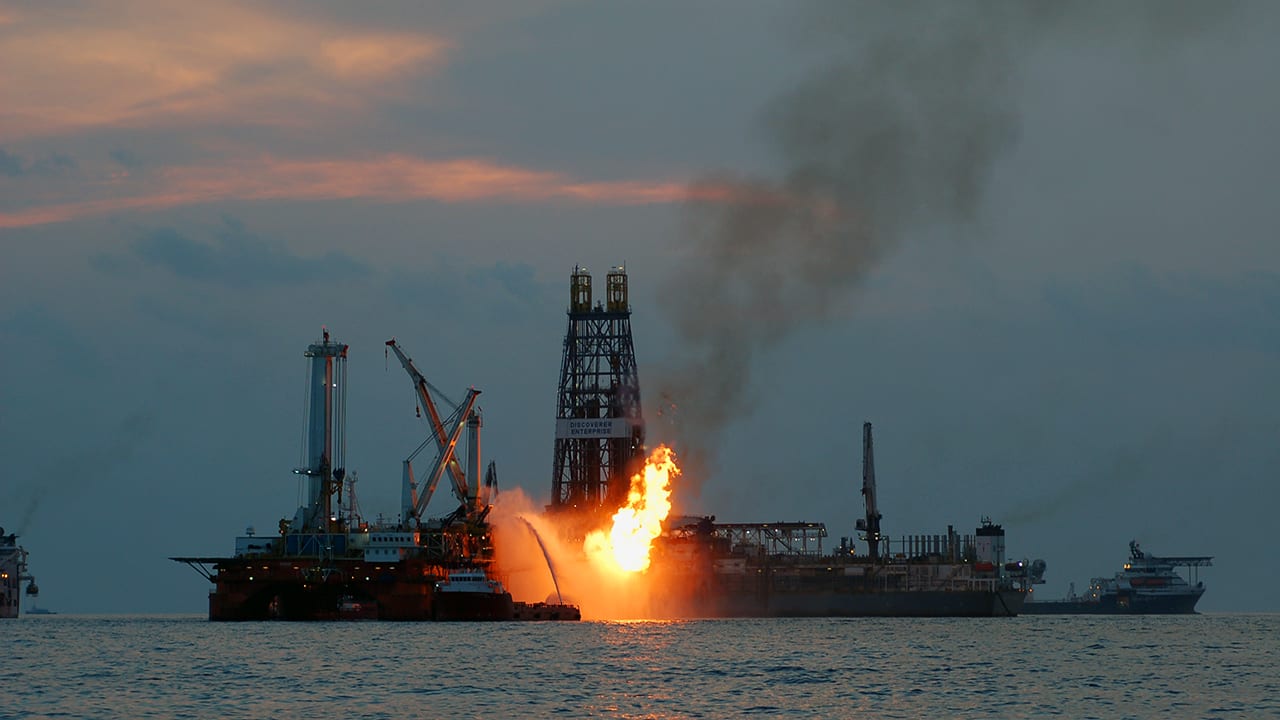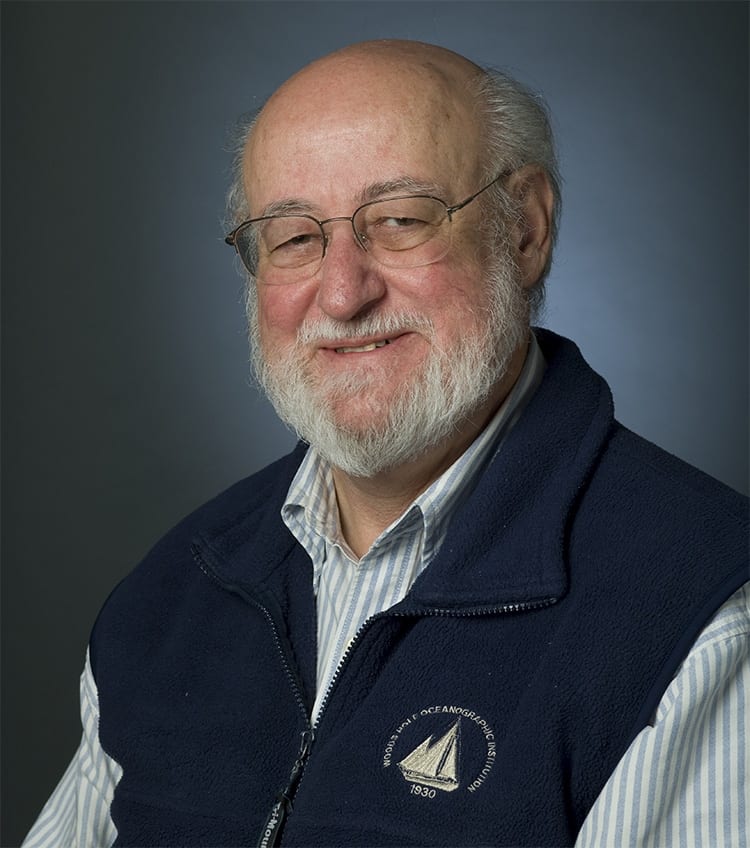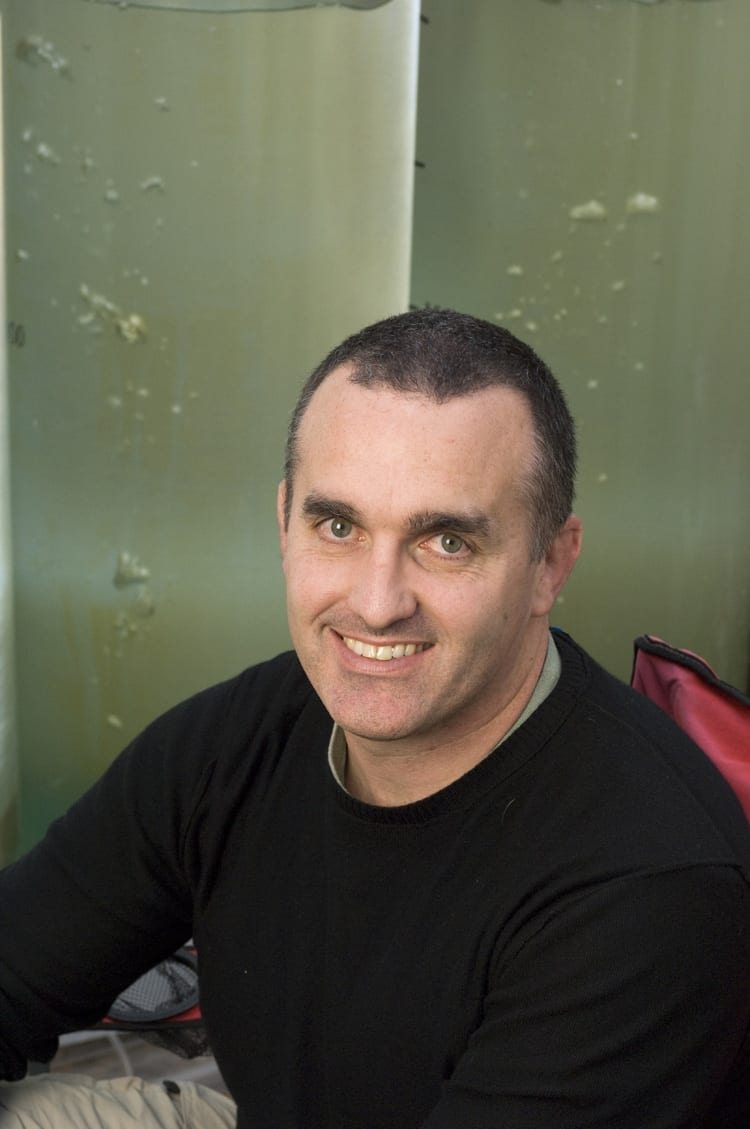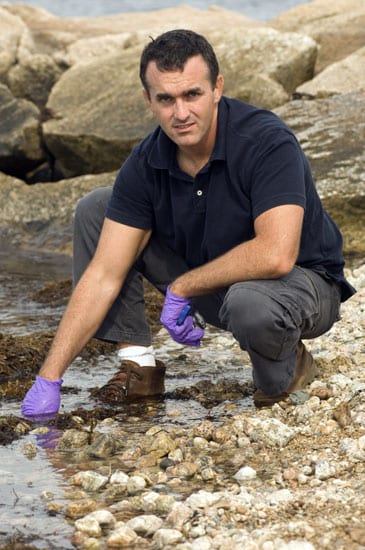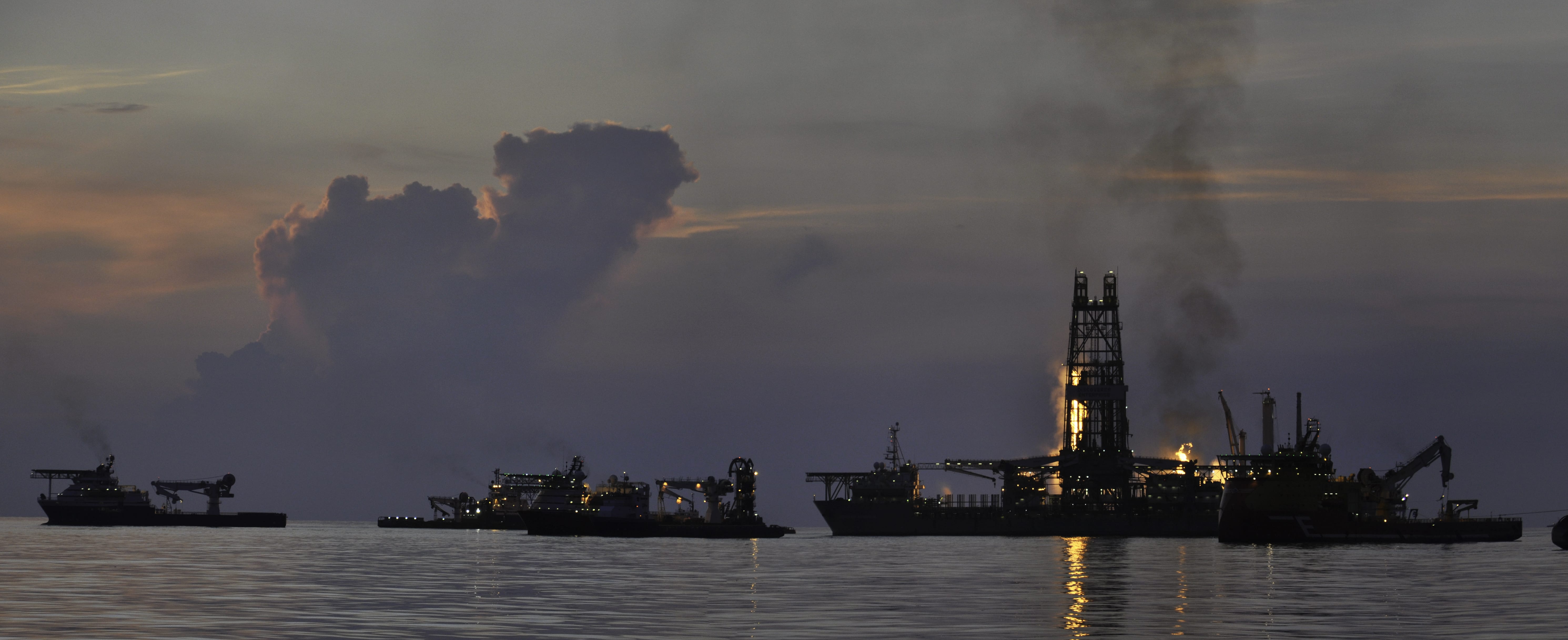News Releases
Dispersants Improved Air Quality for Responders at Deepwater Horizon
A study published Aug. 28, 2017, in the Proceedings of the National Academy of Sciences adds a new dimension to the controversial decision to inject large amounts of chemical dispersants immediately above the crippled oil well at the seafloor during the Deepwater Horizon disaster in 2010. The dispersants may have significantly reduced the amount of harmful gases in the air at the sea surface’diminishing health risks for emergency responders and allowing them to keep working to stop the uncontrolled spill and clean up the spilled oil sooner.
Read MoreJohn W. Farrington Named 2015 American Geophysical Union Fellow
John W. Farrington of the Woods Hole Oceanographic Institution (WHOI) has been elected a fellow of the American Geophysical Union (AGU).Farrington, Dean emeritus and an emeritus member in the Marine Chemistry and Geochemistry Department, is among 60 new fellows who will be honored for “exceptional scientific contributions and attained acknowledged eminence in the fields of Earth and space sciences.”
Read MoreReddy Selected for C.C. Patterson Award
Marine geochemist Chris Reddy has been selected to receive the 2014 Clair C. Patterson Award from the Geochemical Society for his analytical and scientific contributions to organic geochemistry. The C.C.…
Read MoreMysterious Flotsam in Gulf of Mexico Came from Deepwater Horizon Rig, Study Finds
Shortly after the Deepwater Horizon disaster, mysterious honeycomb material was found floating in the Gulf of Mexico and along coastal beaches. Using state-of-the-art chemical forensics and a bit of old-fashioned…
Read MoreFirst Study of Dispersants in Gulf Spill Suggests a Prolonged Deepwater Fate
To combat last year?s Deepwater Horizon oil spill, nearly 800,000 gallons of chemical dispersant were injected directly into the oil and gas flow coming out of the wellhead nearly one mile deep in the Gulf of Mexico. Now, as scientists begin to assess how well the strategy worked at breaking up oil droplets, Woods Hole Oceanographic Institution (WHOI) chemist Elizabeth B. Kujawinski and her colleagues report that a major component of the dispersant itself was contained within an oil-gas-laden plume in the deep ocean and had still not degraded some three months after it was applied.
Read MoreWHOI Launches Ocean Awareness Video Campaign in NYC
The Woods Hole Oceanographic Institution (WHOI) has launched a video campaign on the world’s biggest stage to highlight the importance of the planet’s largest life-sustaining feature—the ocean. The three-month ocean…
Read MoreWHOI Scientists Map and Confirm Origin of Large, Underwater Hydrocarbon Plume in Gulf
Scientists at the Woods Hole Oceanographic Institution (WHOI) detected and characterized a plume of hydrocarbons that is at least 22 miles long and more than 3,000 feet below the surface of the Gulf of Mexico, a residue of the BP Deepwater Horizon oil spill. The work presents a forensic snapshot of the plume characteristics in June and is reported in a study appearing in the Aug. 19 issue of the journal Science.
Read MoreWHOI scientists find ancient asphalt domes off California coast
They paved paradise and, it turns out, actually did put up a parking lot. A big one. Some 700 feet deep in the waters off California?s jewel of a coastal resort, Santa Barbara, sits a group of football-field-sized asphalt domes unlike any other underwater features known to exist. About 35,000 years ago, a series of apparent undersea volcanoes deposited massive flows of petroleum 10 miles offshore. The deposits hardened into domes that were discovered recently by scientists from the Woods Hole Oceanographic Institution (WHOI) and UC Santa Barbara (UCSB).
Woods Hole Oceanographic Institution Will Lead Coastal and Global Observatories Effort
A Cooperative Agreement signed today by the National Science Foundation (NSF) and the Consortium for Ocean Leadership (OL) gives Woods Hole Oceanographic Institution (WHOI) and its partners approval to begin…
Read MoreNatural Petroleum Seeps Offer Clues to the Past and the Future
Just a half mile off California’s coast near Santa Barbara, and in coastal areas around the world, natural petroleum seeps are releasing an astonishing amount of methane gas and oil…
Read MoreWHOI Scientist Selected As Leopold Leadership Fellow
Woods Hole Oceanographic Institution (WHOI) scientist Christopher Reddy has been chosen one of 18 academic environmental scientists from throughout the U.S. and Canada as a 2006 Leopold Leadership Fellow. The…
Read MoreA Natural Petroleum Spring
Bubbles stream from vents surrounding misshapen cones formed by thick liquid oozing from the sea floor. It may sound like a hydrothermal vent field near a mid-ocean ridge, but these…
Read MoreSea Otters and a Sense of Smell
Contrary to popular belief that marine mammals have a poor sense of smell, sea otters may have a nose that can actually help them distinguish between contaminated and safe abalone…
Read MoreWHOI Launches Coastal Vessel Tioga
The Woods Hole Oceanographic Institution’s new 60-foot coastal research vessel (CRV) Tioga was christened and launched March 29, 2004 in ceremonies at Gladding-Hearn Shipbuilding, Duclos Corporation in Somerset, MA.
Read MoreMajor Gift Moves New Regional Coastal Research Vessel Close to Reality
Woods Hole Oceanographic InstitutionA?s planned coastal research vessel is much closer to reality with the announcement of a $5 million gift from long-time friend, Trustee and supporter Gratia Rinehart A?TopsyA? Montgomery of South Dartmouth, MA. Woods Hole Oceanographic Institution (WHOI) Director Robert B. Gagosian said the funds will enable the Institution to proceed with plans to build a 105-foot SWATH research vessel that will serve scientists and students at research laboratories, colleges and universities throughout New England.
Read MoreWhat did scientists learn from Deepwater Horizon?
Ten years after the Deepwater Horizon explosion caused the largest accidental marine oil spill in history, WHOI marine geochemists Elizabeth Kujawinski and Christopher Reddy review what they— and their science colleagues from around the world—have learned.
Read MoreWHOI Scientists Analyze, Explain the Chemical Makeup of Gulf Plume
Taking another major step in sleuthing the 2010 Deepwater Horizon oil spill, a research team led by the Woods Hole Oceanographic Institution (WHOI) has determined what chemicals were contained in a deep, hydrocarbon-containing plume at least 22 miles long that WHOI scientists mapped and sampled last summer in the Gulf of Mexico, a residue of the Deepwater Horizon oil spill.
Read MorePhysical Oceanographer Chosen to Receive Ketchum Award for Coastal Science
Dr. Richard Garvine, a physical oceanographer who has specialized in the circulation of coastal waters and estuaries, has been named the 14th recipient of the Bostwick H. Ketchum Award from the Woods Hole Oceanographic Institution (WHOI).
Read MoreGliders Are Changing the Way Ocean Observations are Made
A fleet of gliders from WHOI’s Autonomous Systems Laboratory is quietly monitoring the ocean near Monterery Bay, California as part of a month-long experiment to learn more about ocean conditions…
Read More
